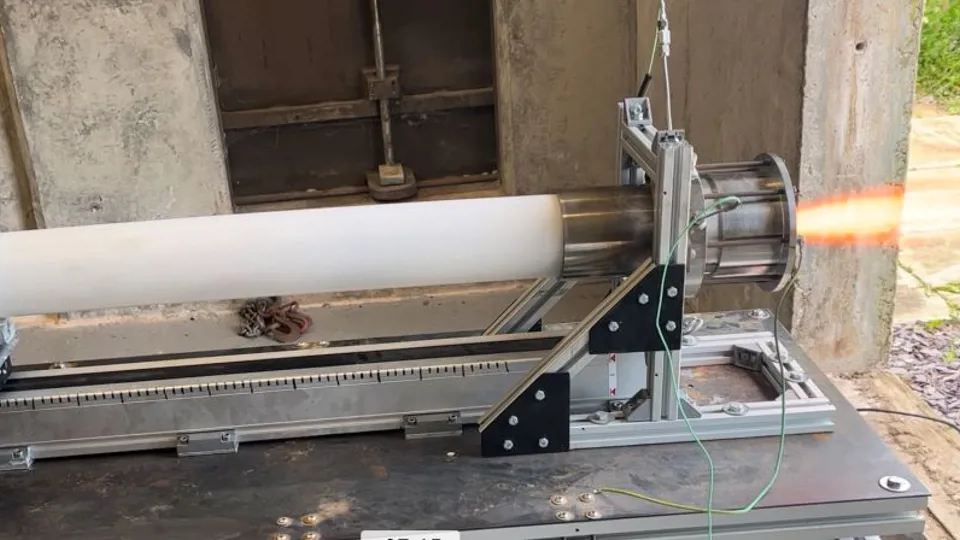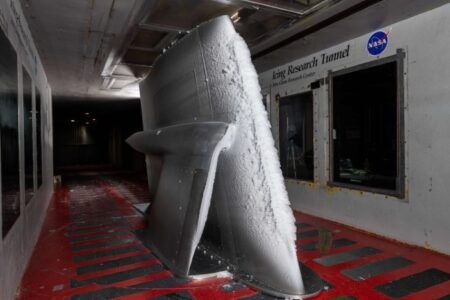An autophage rocket engine that consumes its plastic fuselage for fuel has been built and fired by engineers at Glasgow University in Scotland.
The autophage engine uses waste heat from combustion to sequentially melt its own plastic fuselage as it fires. It then feeds the molten plastic into the engine’s combustion chamber as additional fuel to burn alongside its regular liquid propellants.
The term autophage comes from the Latin word for ‘self-eating’.
The concept of a self-eating rocket engine was first proposed and patented in 1938. However, no autophage engine designs were fired in a controlled manner until a research partnership between Glasgow University and Dnipro National University, Ukraine achieved this milestone in 2018.
Now, with support from Kingston University, the Glasgow engineers have demonstrated that more energetic liquid propellants can be used, and that the plastic fuselage can withstand the forces required to feed it into the engine without buckling.
The team’s design developments are being showcased as a paper presented at the international AIAA SciTech Forum in Orlando, Florida this week.

In the paper, the team describe how they test-fired their Ouroborous-3 autophage engine, producing 100 newtons of thrust in a series of controlled experiments.
The Ouroborous-3 uses high-density polyethylene plastic tubing as its autophagic fuel source, burning it alongside the rocket’s mix of gaseous oxygen and liquid propane.
The tests showed that the Ourobourous-3 is capable of stable burn throughout the autophage stage, with the plastic fuselage supplying up to one-fifth of the total propellant used.




